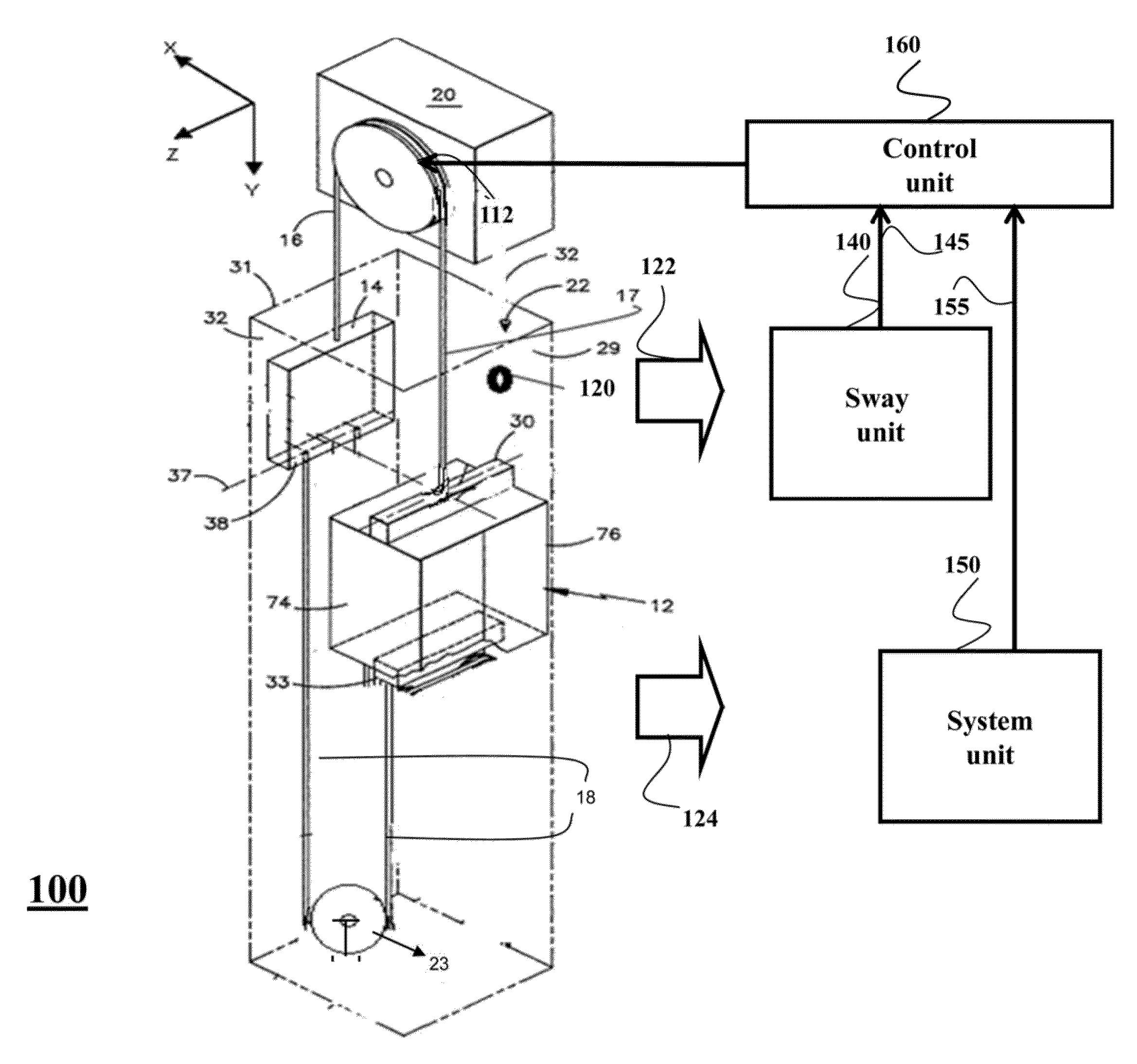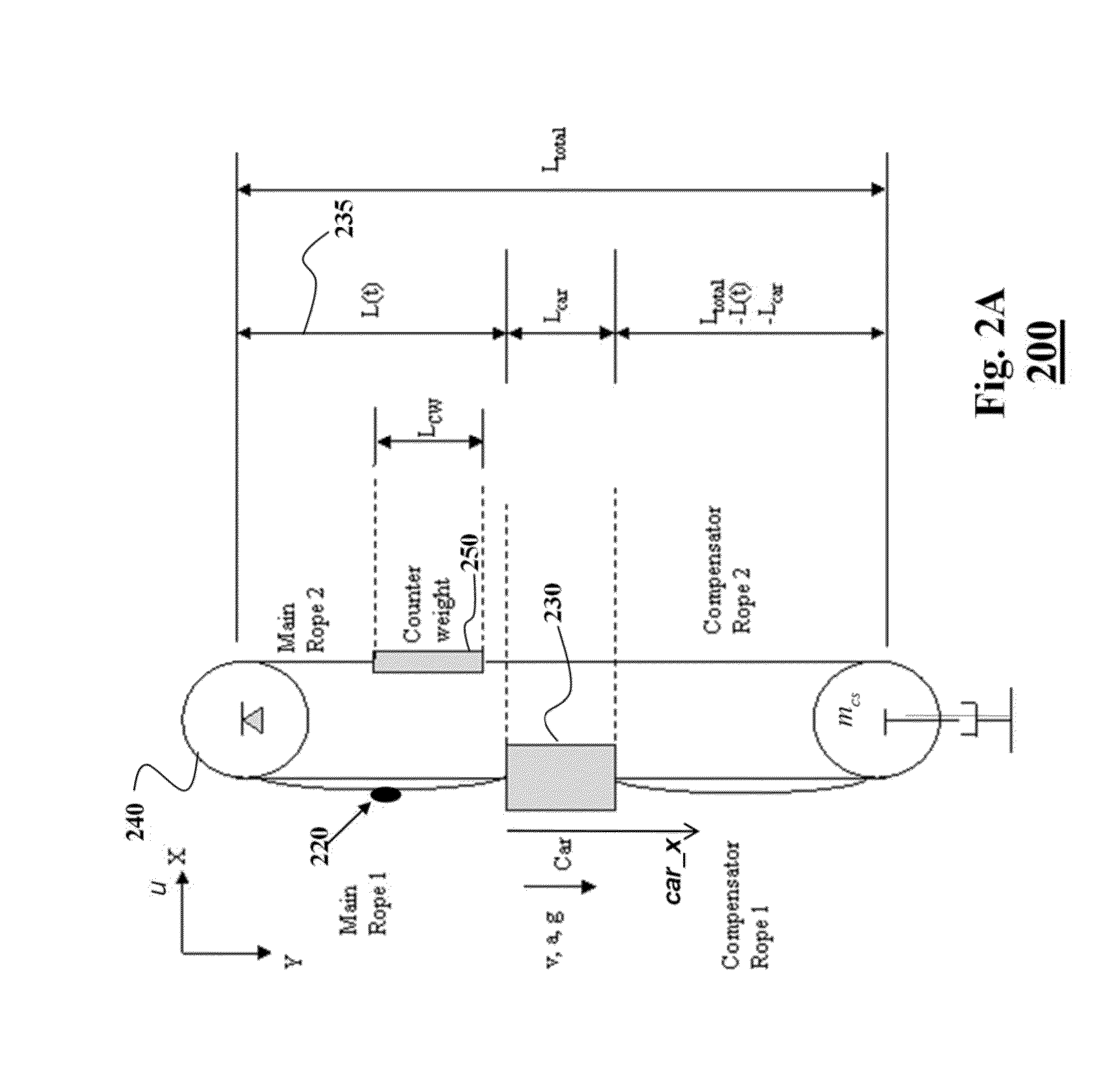Controlling Sway of Elevator Rope Using Movement of Elevator Car
a technology of elevator car and elevator rope, which is applied in the direction of elevators, lifting devices, instruments, etc., can solve the problems of affecting the operation of the elevator system, affecting the safety of passengers, etc., and achieves the effect of reducing the sway of the elevator rop
- Summary
- Abstract
- Description
- Claims
- Application Information
AI Technical Summary
Benefits of technology
Problems solved by technology
Method used
Image
Examples
Embodiment Construction
[0025]Various embodiments of the invention are based on a realization that tension applied to an elevator ropes can be used to reduce the sway of the ropes in an elevator system. Moreover, this tension can be obtained by controlling movement of the elevator car, e.g., a vertical movement within an elevator shaft, without the need of any extra actuators in the elevator system. For example, various embodiments control the main sheave to move the elevator car up and down around the initial static position, within a specified maximum car vertical motion amplitude, e.g. +3 m to −3 m, in such a way to induce enough tension on the elevator ropes and thus reduce the ropes sway.
[0026]FIG. 1 shows a schematic of an elevator system 100 according to one embodiment of an invention. The elevator system includes an elevator car 12 connected by at least one elevator rope to other components of the elevator system. For example, the elevator car and a counterweight 14 connect to one another by main r...
PUM
 Login to View More
Login to View More Abstract
Description
Claims
Application Information
 Login to View More
Login to View More - R&D
- Intellectual Property
- Life Sciences
- Materials
- Tech Scout
- Unparalleled Data Quality
- Higher Quality Content
- 60% Fewer Hallucinations
Browse by: Latest US Patents, China's latest patents, Technical Efficacy Thesaurus, Application Domain, Technology Topic, Popular Technical Reports.
© 2025 PatSnap. All rights reserved.Legal|Privacy policy|Modern Slavery Act Transparency Statement|Sitemap|About US| Contact US: help@patsnap.com



